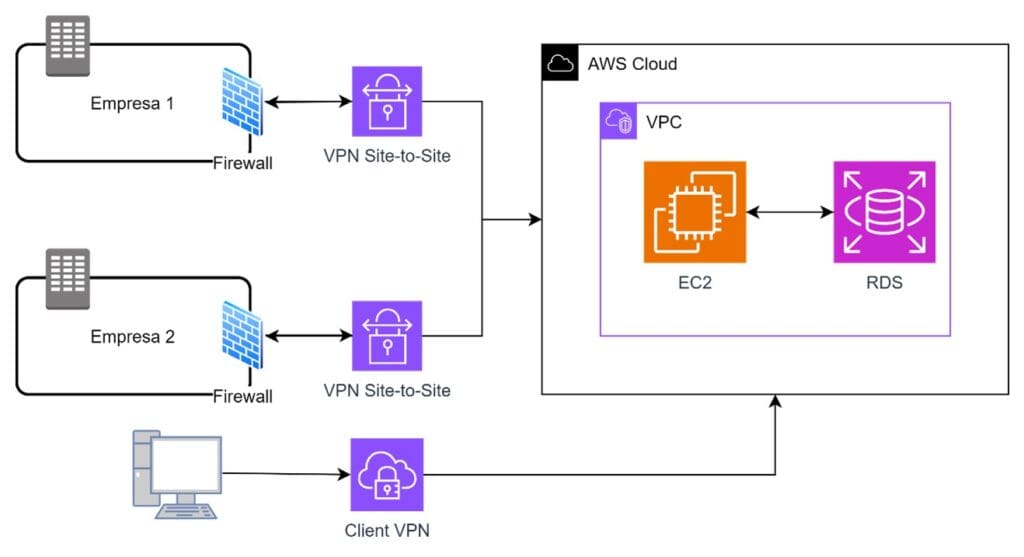The success of a workload migration to AWS depends largely on careful planning, with a focus on optimization and decentralization.
Indeed, cloud migration to AWS offers numerous benefits. Among the main ones, we can highlight: scalability, cost savings, agility, security, resilience, availability and access to innovations.
It also enables simplified management, improves collaboration and productivity, and facilitates the adoption of new technologies.
Successful Migration to AWS: Retail Success Story
A major retail customer needed to migrate a workload consisting of two components: an application server and a database server (MySQL).
This workload was hosted on a server that also included the database, all within its own data center. Two companies from the same business group were accessing the application.
Nubiral’s proposal consisted of hosting the workload on an AWS account with Amazon Elastic Compute Cloud (EC2) as the server component. At the same time, the platform as a service with relational databases, also from Amazon (PaaS/RDS), was used. The latter, with the aim of separating the database from the server.
The advantages of the EC2 implementation are detailed in the following post: https://nubiral.com/ec2-aws/
Key benefits of PaaS / RDS
On the other hand, the implementation of the PaaS RDS service presents five key benefits:
- Automatic administration: automates administrative tasks such as backups, software patching and maintenance. In that way, it frees database administrators from repetitive tasks.
- High availability: offers the option of setting up databases in multi-az environments to improve availability and fault tolerance.
- Cross-platform compatibility: Supports a variety of relational databases such as MySQL, PostgreSQL, Oracle, MariaDB and Microsoft SQL Server.
- Ease of implementation: enables quick and easy deployment of databases. This reduces the time and complexity associated with implementing database infrastructures.
- Usage-based billing: offers a pricing model that involves paying only for the database resources that are actually used.
More information: https://aws.amazon.com/es/rds/
Connectivity and final architecture
In terms of connectivity, AWS Site-to-Site VPN was implemented at both companies to ensure access to the AWS cloud application.
This is a fully managed service that establishes a secure connection between the data center and AWS resources via IP security tunnels (IPSec).
In addition, a VPN connection was established to ensure secure access to the internal network and facilitate the management of EC2 and RDS services.
More information: https://aws.amazon.com/es/vpn/site-to-site-vpn/
With the support of Nubiral’s professional services and the implementation of infrastructure as code, the workload was successfully migrated.
The resulting architecture was as shown in the graphic below:

Conclusions
The customer migrated its application to the AWS cloud to take advantage of all the inherent benefits. But at the same time, they are now prepared to implement future services, such as high availability and scalability.
Decentralizing its database through a PaaS service simplified the creation and management of the database instance. Thus, concerns related to hardware and patch management of a database server were eliminated.
The connectivity established between their on-premises sites and their AWS account provided them with the ability to migrate more workloads in the future as part of their path to digital transformation.
To sum up, with planning and the right support from the right technology partner, the benefits of migrating workloads to AWS multiply.
Interested in enabling your organization to get the most value from the AWS cloud? Our experts are waiting for your contact: Schedule your meeting!




